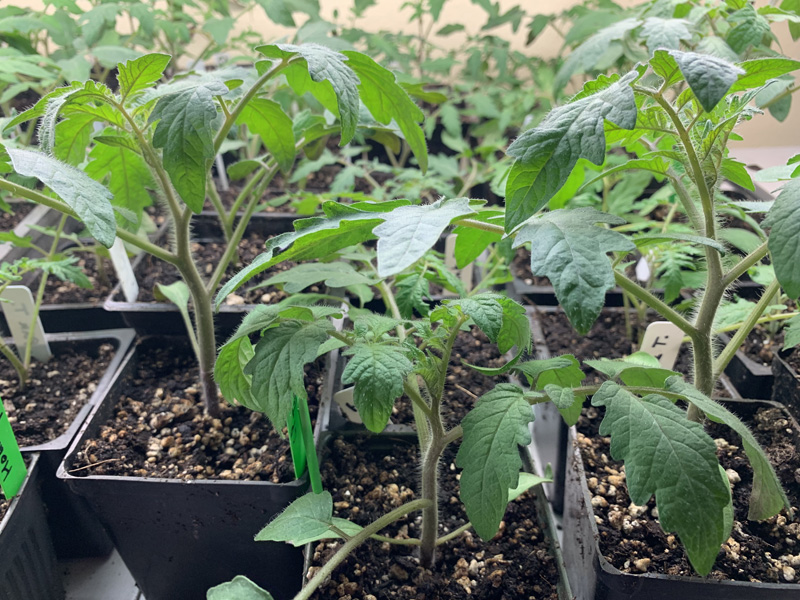I grew up on a farm in the South West of France. By the time I was 17 years old, I was kind of ready to leave the farm and spread my wings outside of the farm. When my first child was born however all my farming instincts kicked back! I wanted to grow my own food. It was a long journey into creating many gardens and moving on, until our family found the perfect spot at Appletree Farm. It is yet another long journey into figuring out how to make it all work. The small scale farming I do here is quite different of course from the farm my brother and father run, but we still manage to have a great time talking about farming and I get a lot from asking them questions.
I start seeding at the end of January and I follow closely a seeding calendar that my friend farmer Ted Purdy (who runs the Youth Farm for Food For Lane County) puts out. Farmer Ted also filters and answers many questions for me throughout the year. I start with herbs, followed by brassicas and hot crops (tomatoes, peppers and eggplants), lettuces, and from then it is constant seeding of everything to have many rotations throughout the seasons, including flowers sometime in March, although many flowers get directly seeded as soon as the soil is warm enough and risks of frost are mostly gone. I start seeds indoor in my kitchen with a combination of shelves, lights and heating pads. As the starts grow, some of them get transplanted into 4” pots, others will stay in cells until they get planted in the greenhouse (these will be the first cabbages, kales, chards, bok choi, broccoli a bit later and heads of lettuce). Then as the weather warms up I move starts into a small greenhouse set up on the deck outside the kitchen window. This will buy me time until I move them into the garden and this will keep them safe from rodent pressure.
At that point, I spend a lot of time, watering, seeding, fertilizing and organizing.
Look for Part 2 soon.

